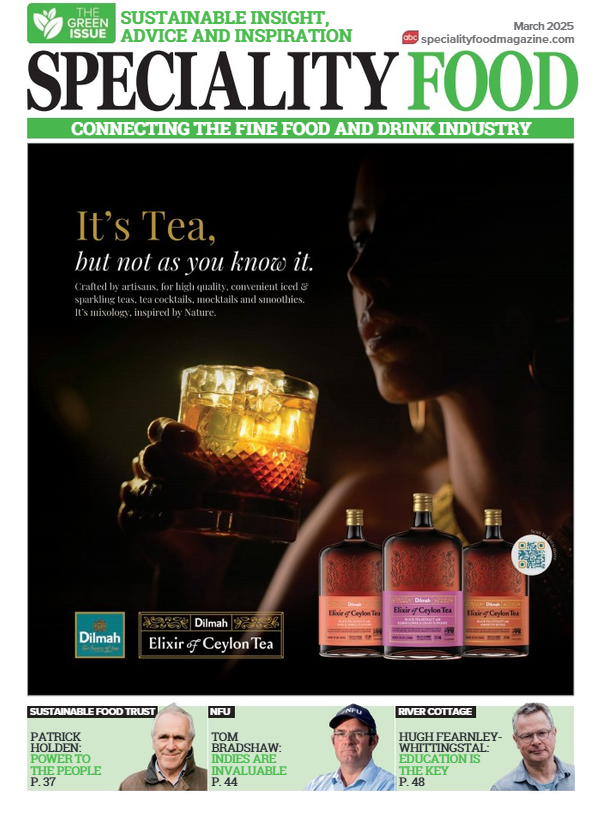“The Bologna Ratio”

- Is our café a hero or a villain?
- “The battle for optimism and morale in retail”
- “Sustainable confusion”
- “What to do about January?”
- “Is the Christmas boom sustainable?”
Last year I visited one of my favourite places – Bologna in Northern Italy, often described as Italy’s culinary capital
Bologna’s nickname is actually La Grassa, based almost entirely on its vibrant food culture at the heart of Emilia Romagna. Prosciutto di Parma, Mortadella, Parmigiano Reggiano, balsamic vinegar, lasagne and tortellini, to name a few, are all specialities that have found a way into virtually every British deli. However, woe betide he who in Bologna asks for spaghetti bolognese rather than tagliatelle al ragu in any self respecting trattoria – as I am sure you all know. In addition to the wide range of great food it has a flourishing and wide range of small, independent food shops deeply embedded not only in a network of medieval streets with porticos but in the culture of the place.
It is in striking contrast to the streetscape of my part of Central London where, although we bemoan the dearth of charming family food businesses and their loss to the local community, we do nothing to support their survival. As an example I would like to compare the situation between the street where I live in London with the Via San Felice in Bologna. Both are residential areas and both close to the centre of town. The Via San Felice is about 700 yards long and contains 110 shops. At a cursory inspection, all seemed to be independently-owned and boasted a toyshop, plumbers merchants, several chemists, a number of gift shops, two opticians, several doctor’s surgeries and barber shops, four restaurants and indeed the Church of San Felice itself.There was, as far as I recall, a solitary estate agents somewhat self-effacingly located up a flight of stairs. The retail contents of Via San Felice are by no means a unique experience in Bologna or indeed in Northern Italy.
What interested me most was that out of 110 shops there were nine independent food shops and 12 bars/cafés that seemed to be coexisting alongside each other. Only two shops were unoccupied. There were also no multiple food retailers. I do not believe there is a street in Central London with that number of independent or speciality food shops. My own street in London is about a quarter of the size and contains 31 shops. Seven of the shops are unoccupied and of the remaining 24, six are estate agents (which is 25%). I know of six food-related commercial activities that have closed down since my time in the street .
Perhaps a more appropriate comparison would include Marylebone High Street which (if Thayer Street at the southern end is included) is about 900 yards long and contains about 116 shops or commercial activities. It is a highly regarded foodie destination, of course, and boasts four pubs, eight cafés and nine restaurants. There are also three multiples selling food and five speciality food shops (which only just outnumber the three estate agents). Of the shops that I define as speciality, at least two have a proportion of the shop given over to food to go. In fairness, nearby there is a small street with three other small food shops – two of which have large food to go offerings. However, even our most avowedly foodie destination still achieves a low score on the Bologna Ratio.
There are many complexities when comparing various locations in different countries and it is very tempting to make sweeping generalisations, but the bottom line is that small independent food shops simply cannot afford the high commercial rents in Central London or many other city centres. Of course a fair rent needs to be paid for a fair location, but if landlords and town centres want to have local communities thriving with independent food shops they must be supportive in terms of rental income, fitting out costs and rent-free periods. I recently visited East Village near Stratford and was pleased to see that, although by no means yet the finished article, some care and consideration has been taken over these issues. If we really wanted independent food shops, would we not try harder to keep and encourage them?
more from Expert Eye
-
“2019 and all that”
16 October 2019 Expert Eye"Over the past 47 years, and since Partridges first started trading, the year 2018 has proven to be one of the worst!" -
“The multi-sensory deli”
06 September 2019 Expert EyeEver since I started working in food shops – some 16,790 moons ago – it has always been impressed upon me that the three most important aspects of a successful enterprise are location, location, location. -
“The Costa Del Shop 2019”
20 August 2019 Expert EyeEver since I started working in food shops – some 16,790 moons ago – it has always been impressed upon me that the three most important aspects of a successful enterprise are location, location, location.

